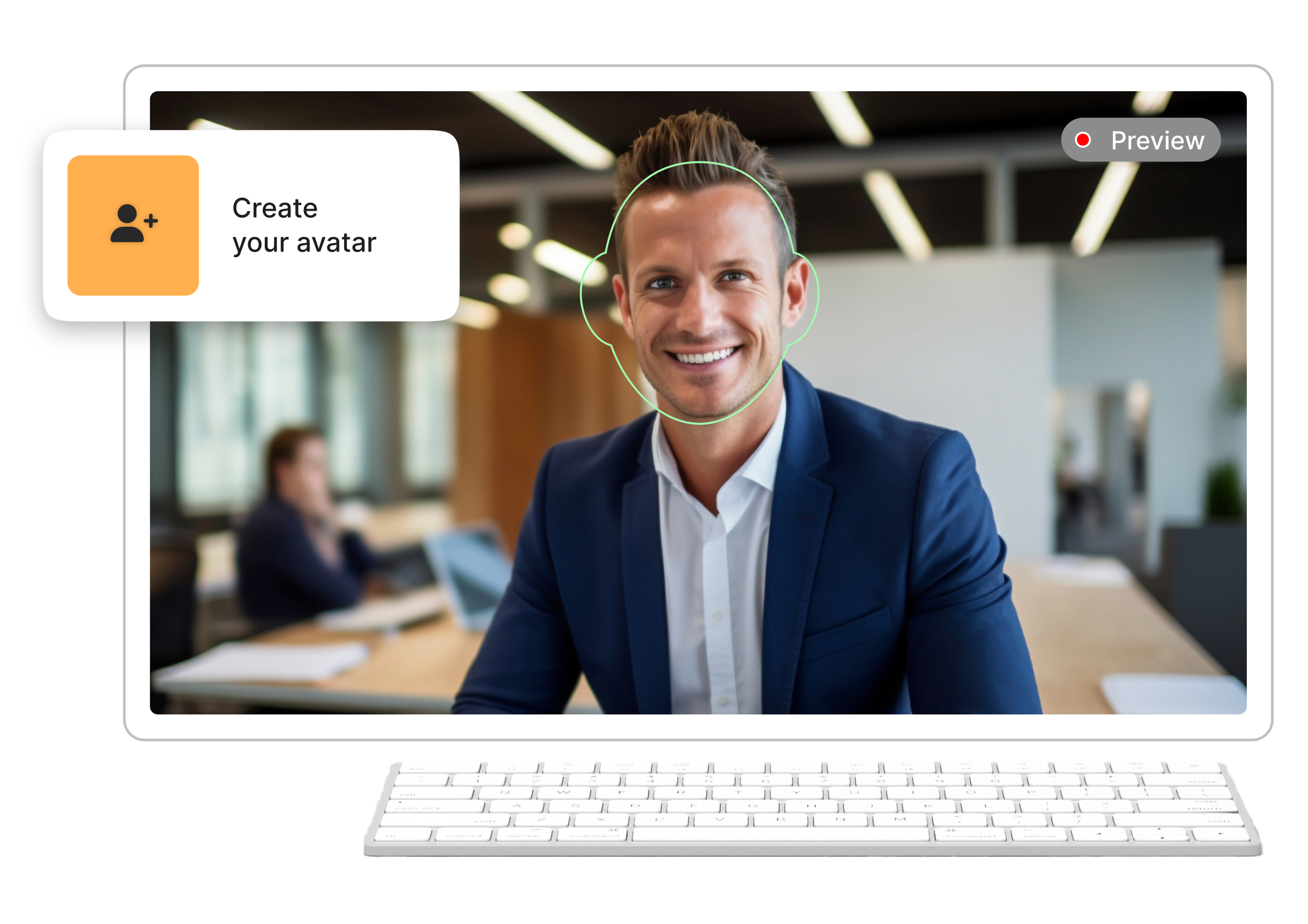Selling has seen some changes over the years. What used to be a matter of over-the-counter or maybe door-to-door has been augmented and even replaced by a plethora of remote possibilities, from social media to email.
However, there are those who find this method of purchase a little inhuman, largely because you can’t see or hear any actual humans. This may explain why there’s an increasingly popular technique that combines the good old human face with the reach that tech delivers. It’s called video prospecting. In this article, we’ll go through how to do it right.
Your director’s chair awaits. Ready? Action!
What is video prospecting?
In short, video prospecting is the practice of using videos to try to move a prospect down the sales funnel. But you have to decide what you’re going to focus on. It could be a whole new range of exciting products about to drop. Or it could be looking at inactive leads and asking how they’re doing and if now might be a good time to re-engage.
It has the advantage of being a little different, which enables you to cut through all the usual email avalanche. It’s also surprisingly efficient; a few minutes in front of a camera is all that’s needed to make a real impact with numerous customers. Traditional prospecting can be enormously time-consuming and—let’s face it—at times, a bit of an unproductive slog. Video prospecting is the chance to try something new and fresh.
And who doesn’t like the chance to sit back and watch a movie? OK, it’s not Avatar, but it can be super groundbreaking in its own way. Let’s look at how.
Best practices for video prospecting
Many people think they’re good at video. Maybe so, but it’s always a good idea to stop and consider some important tips on best practices.
- Decide on approach
Video prospecting can be one of two general kinds:
- Mass videos
This is where you record a one-size-fits-all video that is sent out to many prospects simultaneously.
It’s a hugely time-efficient approach that maximizes output from a relatively short time in front of the camera. A product demo video is a good example of this. It has an element of personalization because it’s a person talking straight to the customer. However, it is pretty much like a TV ad—in other words, it’s easy for the customer to ignore if they’re not immediately engaged.
Having said that, mass videos can be extremely effective if you have a compelling message and have a certain something in terms of presentation skills.
- Individual videos
This is where a video is made with an individual customer in mind. So, you use their name and direct the topic so that it intersects with their areas of interest, which you will have researched ahead of time. You may be thinking that this sounds like a lot of work when you start stacking up a pile of prospects, but not necessarily. By editing the film into several separate sections, you can personalize where you have to without having to re-film the whole thing.
So, if you’re targeting a prospect who works in mobile comms, you can have an introductory segment where you hail the person by name and ask how things are going in the SMS deliverability world. Then segue to your more general sales pitch concerning what you’re company does. Then segue again to how your company can solve problems specific to the mobile comms world.
Once you’ve decided on what approach you’re taking, you’re ready for the next step.
2. Prepare for your big moment
The first factor to recognize is that you might not be the best person to deliver the goods. That’s OK. You’ve got plenty of gifts in other areas. So, be honest with yourself. Maybe do a trial and see how you think you come across.
If you decide that you’re not cut out for a life in performing, start thinking about your colleagues and who might shine on camera. You’re bound to know somebody who’s a TikTok triumph and who absolutely shines when the lens points their way. Use them.
Now it’s a case of writing your script and ensuring it touches all the points you want it to. What are you trying to do? Get to the point quickly. Once you have the functionality sketched out, run through it and inject some fun. Get together with your presenter and go through with them how you want it to come across.
Think about how you will mix material, such as having the presenter address the camera on the virtues of, say, preview dialer software, then cutting to footage of the software in action. It’s good to have a variety of inputs like this, but don’t overdo it. You don’t want to make your customer dizzy.
Then it’s time to do a practice run, after which you and the presenter (and any sales colleagues you want to include) can congregate and critique so that you iron out any niggles.
After that, it’s time for the real thing. Before you press rec, it’s worth settling yourself or your presenter. Deep breaths, meditation—whatever their thing is. Just a few minutes to center oneself before the camera starts to roll.
3. The nuts and bolts
Here are the practical considerations you need to include in your thinking:
- Less is more
You don’t want to make your customer sit through a video the length of Gone With the Wind. They’re busy, they’ve got things to do. And unless you’re a George Cukor level-director working with the new Vivien Leigh, you’re probably not going to be able to maintain quality over an extended period of time.
Strip it down to what you want from the video. It’s a tool aimed at giving a good customer experience and securing a click. That’s pretty much it. So, don’t waffle too much and keep it focused. Ideal length? About 30–60 seconds.
- Location
Where are you going to film this? The wrong location can ruin your video. If you have a dull room, it can give your video a dull flavor. However, the right location can really juice it up. Do you have access to anywhere unusual? For instance, do you know anybody who works in a theatre? A stage or an empty auditorium can have a very striking effect.
Once you have the location sorted out, be sure to secure it so that noise interruptions are kept to a minimum. This is why filming at an airport, for instance, may not be ideal.
- Lighting and equipment
Lighting is the unsung hero of sales prospecting. You need a bright, zippy level of illumination, but not so much that the presenter ends up looking washed out or dazzled. This may take some trial and error because every environment will have its own lighting demands.
You can probably get away with the camera on your laptop or mobile device. If you decide, however, that you need something a little more professional, there are plenty of options available. One tip worth bearing in mind is that video viewers tend to be more tolerant of poor image than of poor sound. Nothing more annoying that not being able to hear and/or understand what the presenter is saying. So, a better mic might be a good bet.
Beyond the more traditional elements of video production, you might want to avail yourself of some of the AI assists that are now on offer. For instance, you could check out the text to video AI generators that are available.
4. Think about the invitation
It’s a small (literally) tip but an important one: when you reach out with an invitation to open a piece of video prospecting, it’s a good idea to use a personalized thumbnail. Having an image of the sales rep’s face alongside the invitation can increase the human factor. Humanization is what this process is all about. After all, it’s nice when an invitation comes with a friendly face.
Besides this, ensure that the copy you use is brief, compelling, and (ideally) original and/or amusing. You’re trying to cut through a huge amount of other comms traffic, so put yourself in your customer’s shoes and think about what would make you click and watch. But don’t fall into the capitalization trap. Few things are more off-putting than a sales message rendered entirely in capitals. It’s being shouted at, and nobody likes that.
Run credits
Video prospecting can be a hugely effective tool, and the good news is that you don’t have to be an Oscar-winning director to make your pieces of work do a good job. Your main priorities are similar to all selling: think about your customer, identify who it is you’re talking to, and think about what you offer and how it can solve your customers’ problems.
Apart from that, it’s a question of keeping it brief, keeping it fun, and using the best person for the presenting job. Then, once you know your equipment and location are up to task, you can get going on your masterpiece. Stick a great invitation out there and see what happens. You may be surprised at how well it goes down. Then it’s just a matter of coming up with a sequel…








